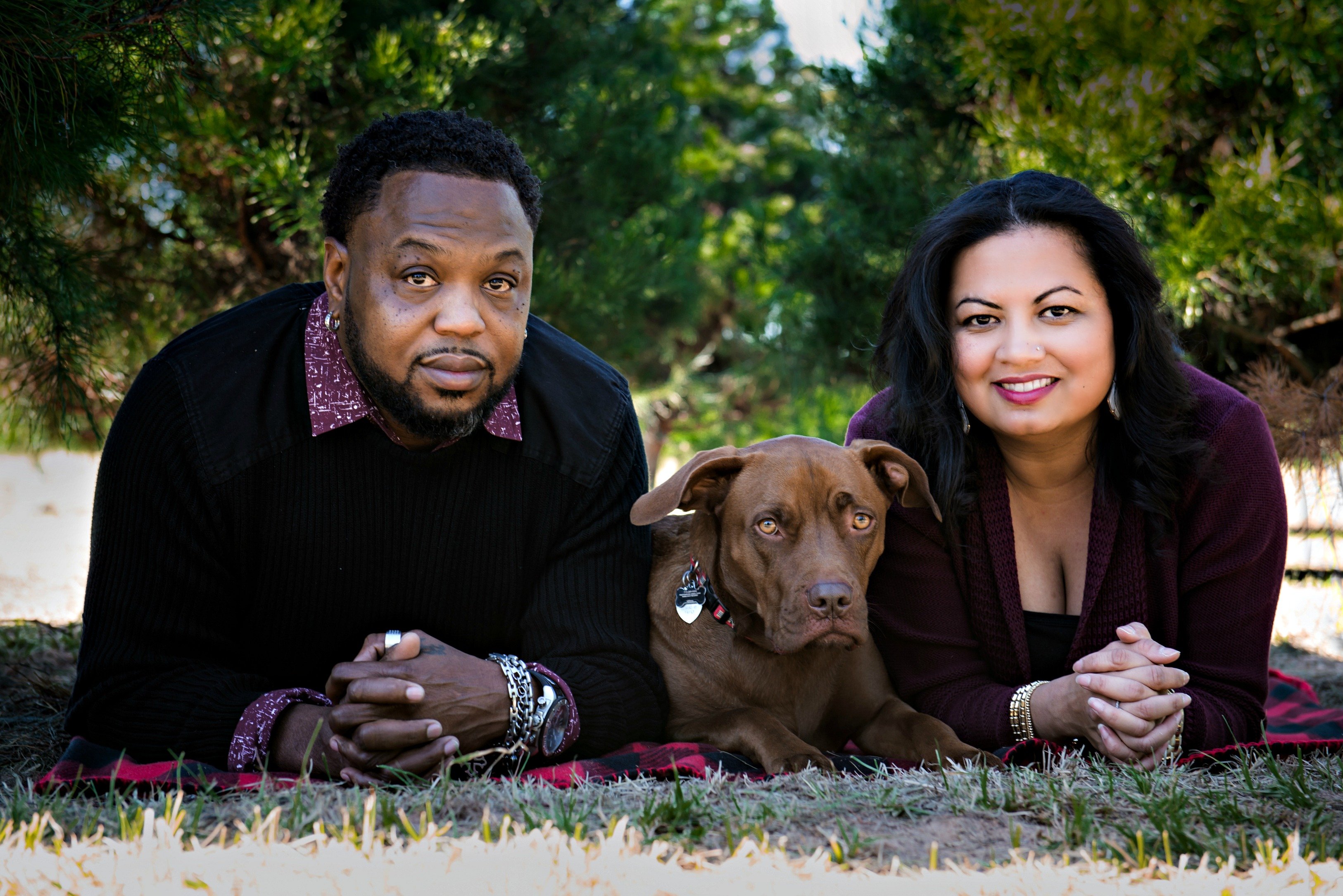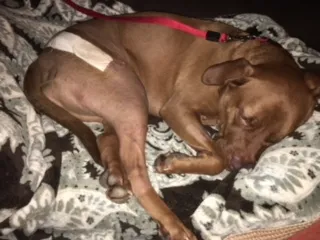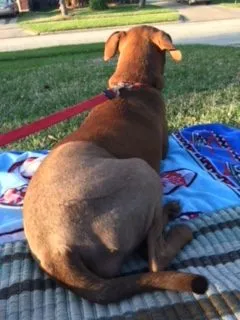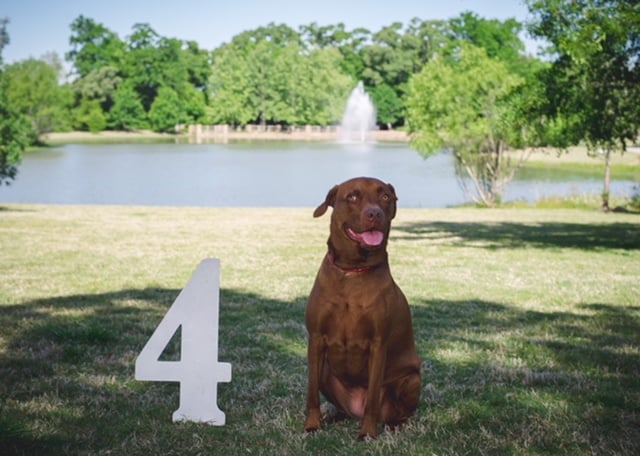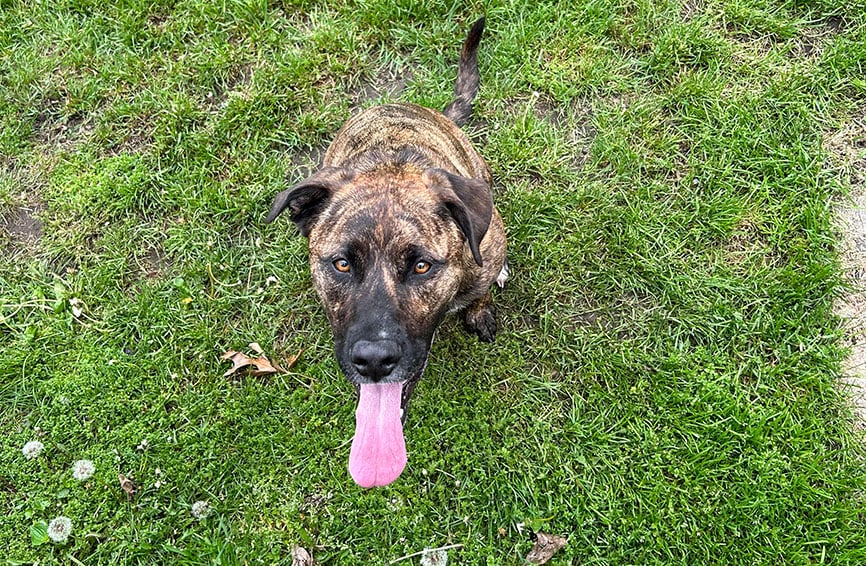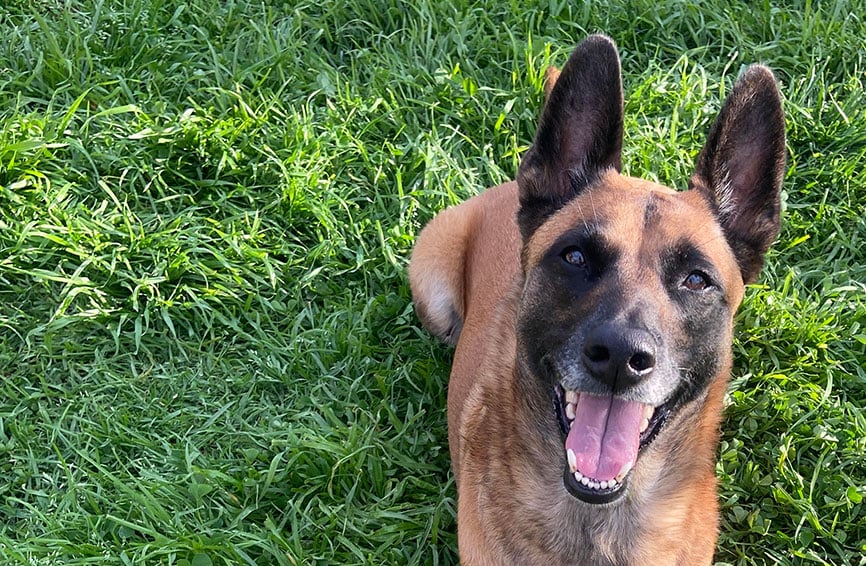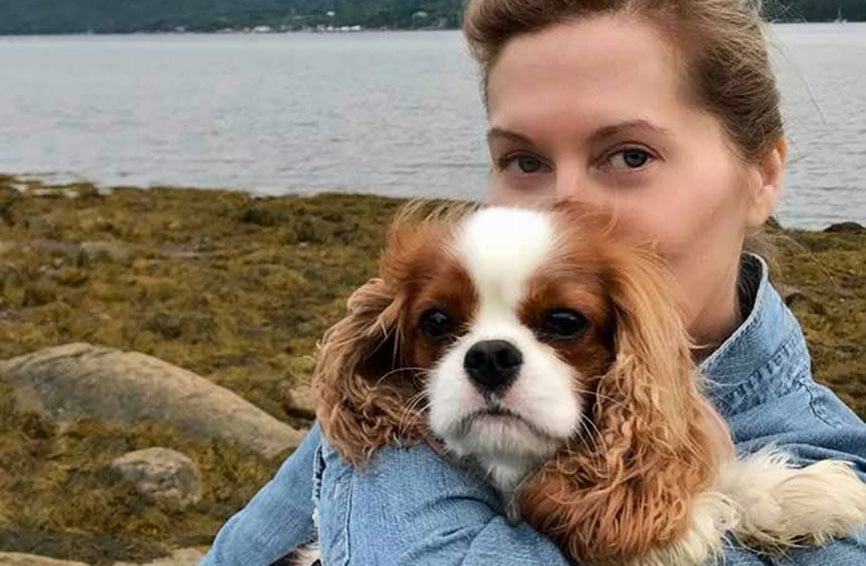Key Takeaways
- Coco, a dog diagnosed with hip dysplasia, needed a complete hip replacement.
- Recovery was challenging for Coco and her pet parent.
- Coco eventually started moving better, impressing the vets with her progress.
- Coco has made a complete recovery now.
- Thanks to Healthy Paws, Coco’s pet parents received reimbursement for the vet bills.
Table of Contents
“We were looking for a dog for a relative’s birthday, a ‘farm dog’ that could help with the cattle and just keep him company,” says pet parent Sonja. “A friend of mine that works with several rescue groups sent me a picture of Coco and I instantly felt a connection. The ‘mistake’ (more of a blessing) we made was getting her six days before we were going to take her to the relative – I fell head over heels in love with this sweet, beautiful girl and did not want to let her go! We still took her…and when we presented Coco to him, he said he didn’t want a dog. So, she came home with me!”

Sonja and Coco bonded instantly. “Coco is the best blessing ever,” she says. “Coco reminds me to slow down and be in the moment. I wake up with joy every morning because I have this beautiful face peering down at me, willing me to come out from under the covers. She’s taught me patience and she reminds me to love others unconditionally.” Sonja credits Coco with keeping her active and more adventurous – “because I want her to try and see new things!” The naturally happy pup always has her tail wagging; “We have a joke that if someone tried to break into the house, they’d be able to take anything they wanted as long as they gave her a kiss and some belly rubs!”
Sonja has had an intense journey with Coco, who went in for a limp in December of 2017 (at 3 years old), and would be diagnosed with hip dysplasia and need a full hip replacement by the end of January 2018.
“It was hard… harder than I thought, and I think Coco’s story would help other pet parents whose pets go through hip replacement surgery – just to see the process, what they’re going to go through, what the pup is going to go through – so people can mentally prepare.” Here’s what happened.
The initial surgery
“Coco has always been playful – running, jumping, swimming, just active every day. Then one day, our favorite sitter, Nancy, (also called her ‘Other Mom’), heard a clicking noise when Coco stood up. She mentioned that this could sometimes mean hip dysplasia,” begins Sonja. “I started remembering a few things recently: Coco would not jump straight into the backseat of my SUV – instead she’d jump onto the floor then up to the front seat and then into the back seat – and when she would jump onto the bed sometimes, her back legs would miss. I had no idea of the signs.” Sonja took Coco to the vet and after a sedated x-ray, “my heart broke when we found out that both of her hips were bad.”
The vet recommended going to Texas A&M for a consultation and Sonja was impressed: “The first [visit], I was still nervous. I had a long list of questions and even cried when he mentioned how much pain she must be in. Everyone was surprised that she was still jumping onto the chair; but that’s my baby, so strong!” They scheduled a second visit to determine her health, and then, by the third visit, Coco got the green light for surgery.
“I had to leave her that day to prepare for surgery the next morning. [We] took a 45-minute walk, had dinner, and I said a prayer with her, taking lots of pictures with her favorite blanket and her ‘baby.’ Then I cried the whole way home during my 2-hour drive!” Sonja, emotionally exhausted, returned in the morning for the surgery and every two hours, the vets would give her updates in the waiting room. “Finally, at 5:30pm, they said she was out of surgery, doing well and the surgeon was extremely pleased with how everything had gone. So grateful!”
Recovery for Coco
Three days later, Coco came home, looking and feeling fragile. She was required to spend 23 hours a day in her crate – “She had only started crate training about 2 months earlier when we found out she would need to be crated during her 3-month recovery process!” Sonja was wrecked with worry: “Everything from ‘how was I going to take her on 5-minute potty breaks a day when it takes her 10 minutes to find the perfect spot?’ to ‘how was I going to keep her happy when she couldn’t do her favorite things?’” Sonja had read about the recovery process online and it helped ease her mind, but the first week was very rough. “She had to be walked with a belly sling at all times to help support her hips – and that is not easy! My arms got a real workout!”
Coco hated the sling and couldn’t walk on anything slippery, but most of all, she was bored. “She needed some activity, I could tell, but what? A friend gave me some ideas and boy did those make a difference!” Sonja did the following: “I hid treats under plastic cups and Coco had to guess where the treat was; I learned to give doggie massages to help relax her; and she learned ‘I love you’ in sign language means to give me a kiss.” Sonja didn’t stop there. She slept on the living room floor next to Coco’s crate (“she didn’t like to sleep alone!”), she voiced stuffed animals to play with her, and bought puzzles with hidden treats (“she could solve those in mere minutes”).
“After the first week, we finally fell into a routine that worked to keep her stimulated and happy.” The two would walk out to the backyard and simply sit for about an hour. “We’d just watch the birds, enjoying the sun and the great weather. I would read to her and talk to her and give her lots of belly rubs. We would do the same thing in the evenings. Just that outside time seemed to make a big difference for her, and she seemed much happier to go into her crate.”
Post-recovery
At the 4-week mark, Coco could take two 10-minute walks a day. By the sixth week, her x-rays looked great and she was able to put 85 – 90% of her weight on the hip and take four 15-minute walks a day. “I also allowed her to start having visitors and it would be the highlight of her day,” says Sonja. “We have amazing friends that would come by, bring her a gift and just spend time with her. She was so happy to see someone other than us!”
Finally, the twelfth week mark had arrived, and Sonja was hopeful: “It’s been a tough road, but she is now clearly not in pain in her right hip. Only time will tell if she will need surgery in her left hip – sometimes they utilize one hip so much that she may never show signs on the other.” The vets gave her a good prognosis and even called Coco an overachiever: “She’s doing better than they expected, and you would never be able to tell she had a hip replacement!”
How Coco is doing today
After her complete recovery, Coco is back to having playdates with her friends, going swimming at their neighbor’s pool (or any lake or ocean, really), and taking the bi-annual trips with mom to Austin, TX. “Her personality makes her so fun to hang out with; she has made friends with every dog and human in our neighborhood; everyone knows Coco by name – even the Chick-fil-A Manager and Starbucks employees!”
Sonja says that she was most grateful to her friends and their support system: “I thought it was going to be so hard on [Coco] and I was prepared for that… but nothing could have prepared me for how hard it was going to be on us too! Having to keep her as still as possible but still keep her engaged and stimulated. Second guessing everything I was doing… am I letting her walk too long while she finds the perfect spot to go potty? Am I hurting her when I took off her bandage on day 3? Is she eating enough but not too much for her weight? Is she comfortable? Is she happy?”
Because of Healthy Paws, Sonja and her husband were reimbursed $4,768 on their vet bills totaling just about $6,000, and Coco’s doing great. “She’s happy. Still happy. Still wags her tail. Still acts silly. Still won’t eat vegetables. Still gives lots of kisses. Still loves her belly rubs. She is still Coco, my strong, fierce, independent girl,” says Sonja.
The Healthy Paws plan covers hip dysplasia and other chronic or genetic conditions and we see claims for these conditions fairly regularly. If your dog or cat has not exhibited any symptoms before enrollment or during the waiting periods, claims for the condition will be covered up to 90%. Find out more by getting a free quote today.
We were so taken by Sonja’s first-hand account of her dog’s hip replacement surgery, we wanted to share with our readers that you can follow Coco on Instagram: @cocos_ruff_dog_life. And if you are a Healthy Paws pet parent with a recovery story to tell, we’d love to hear it! Send your pet’s story along with photos of your four-legged family member to happytales@healthypaws.com
